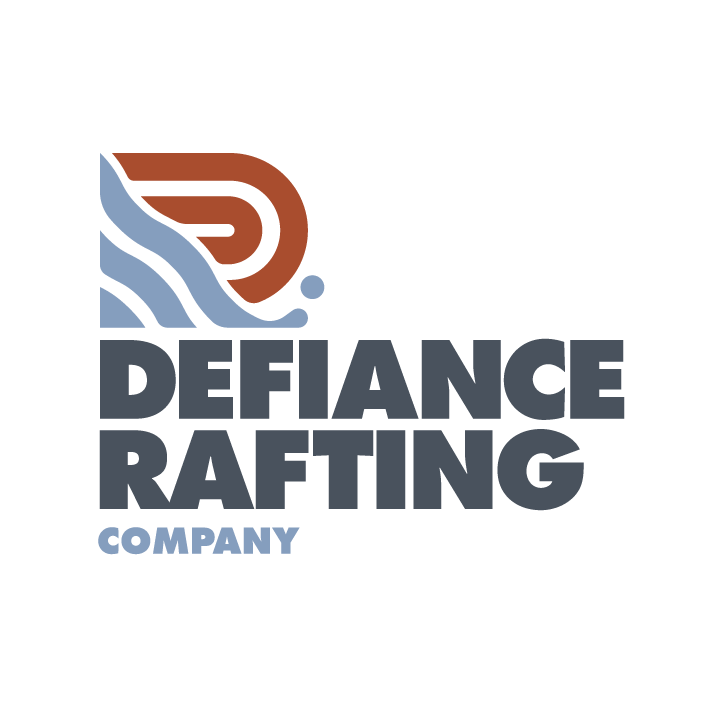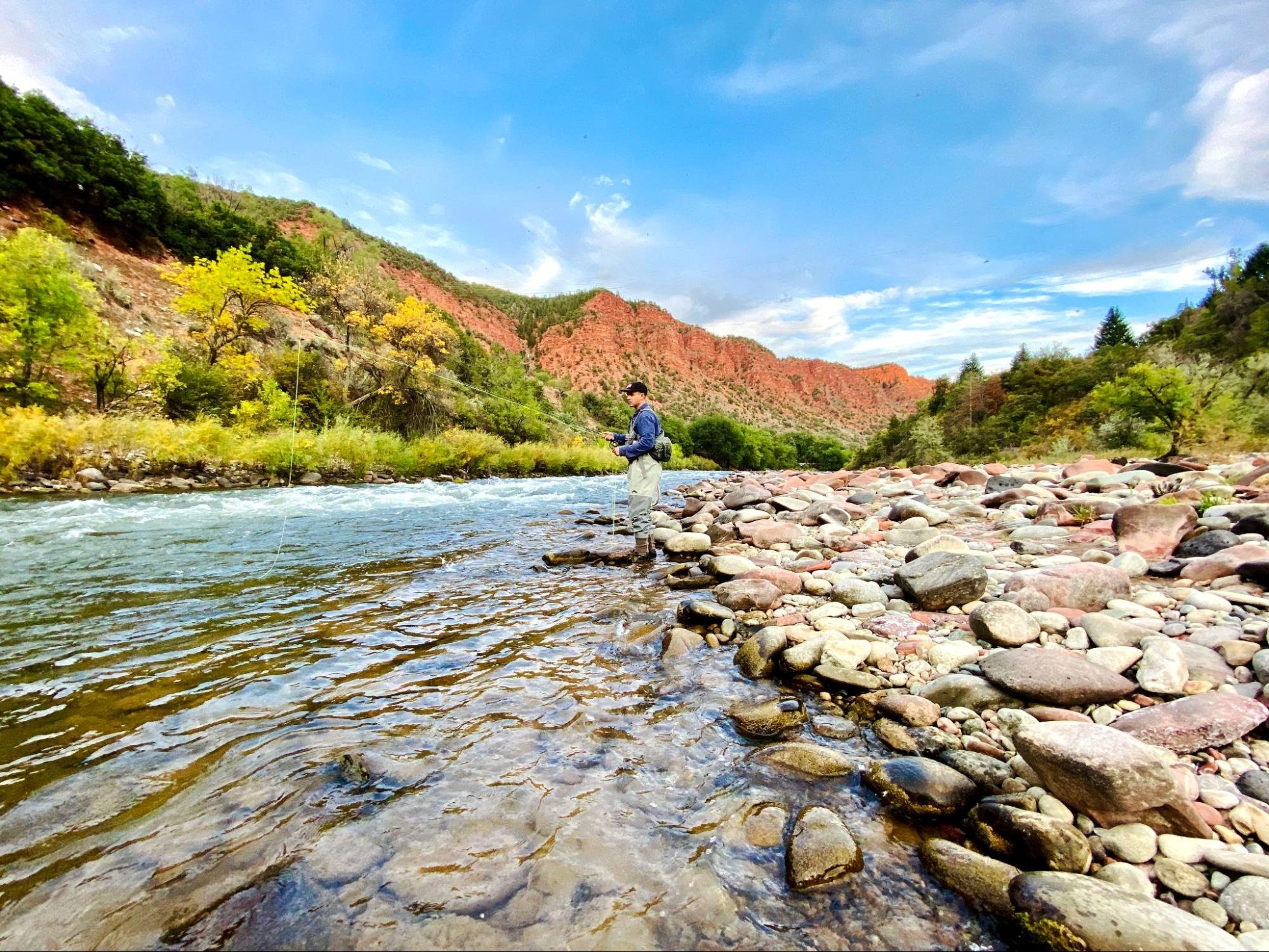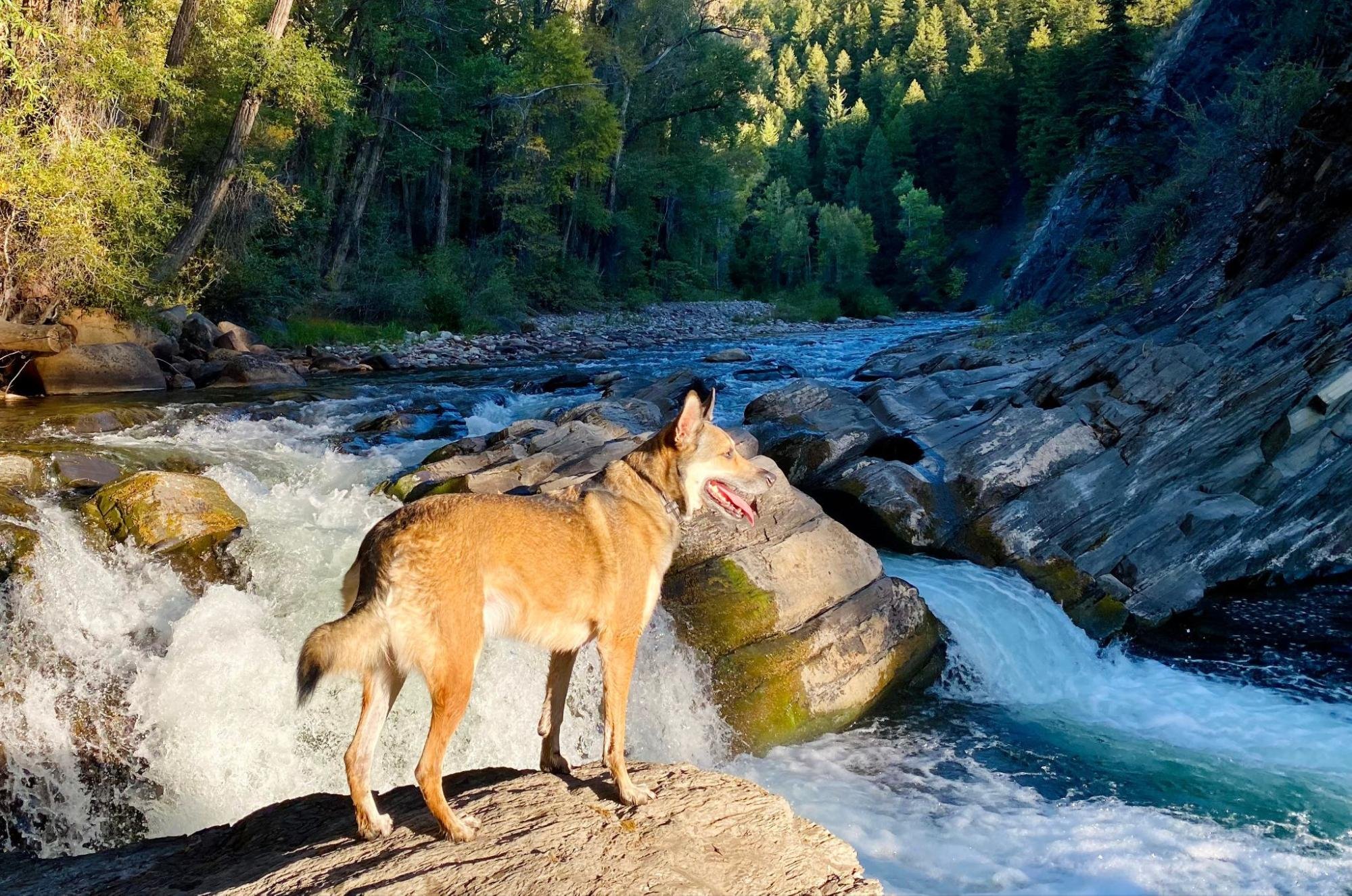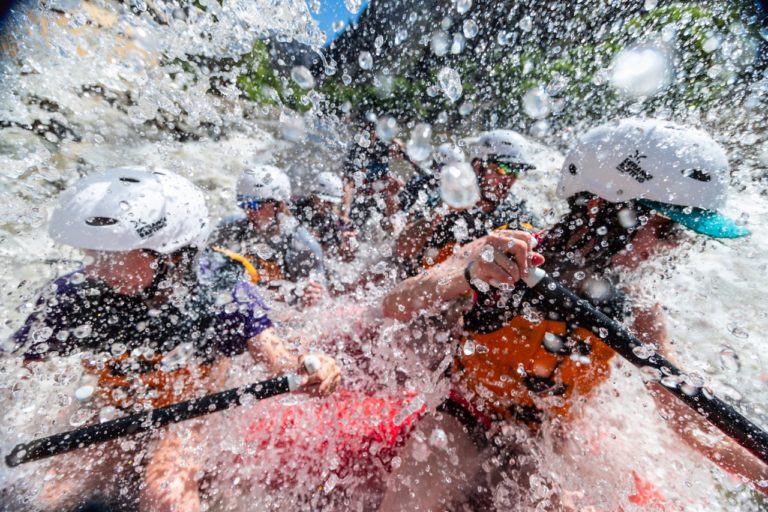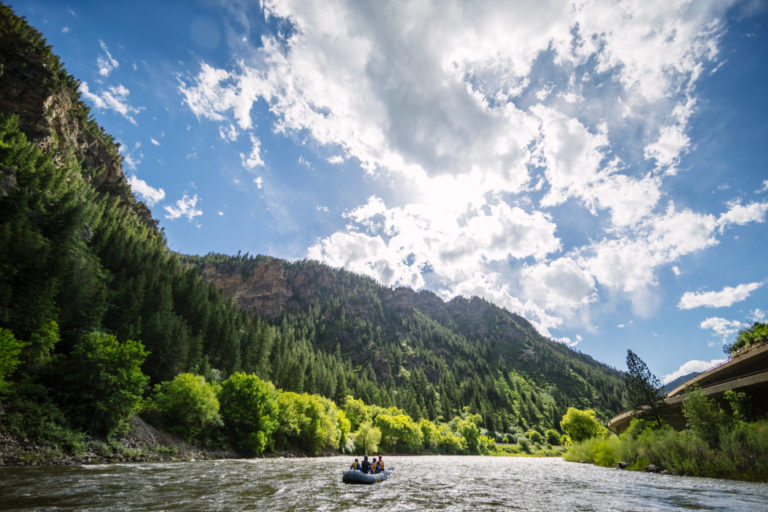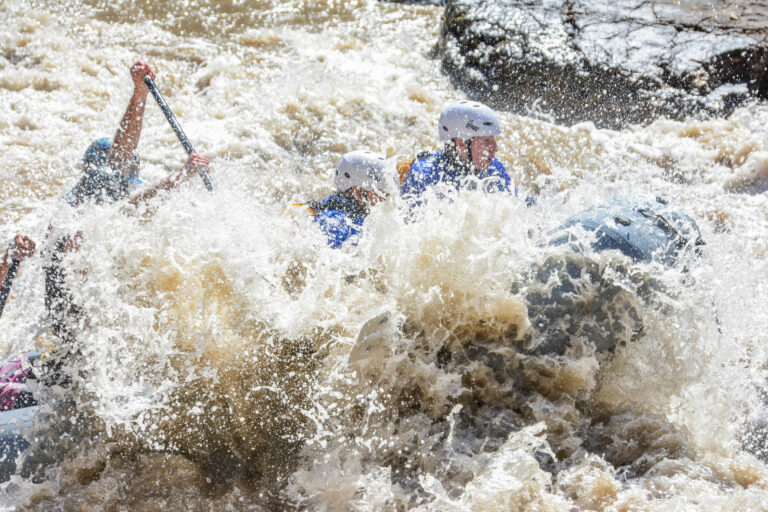
Roaring Fork River: What To Expect
With pristine natural beauty and stunning diversity, the Roaring Fork River embodies everything quintessentially Colorado. Its scenic path begins near picturesque Independence Pass and continues the relatively short – and sometimes intense – journey down the Roaring Fork Valley in Western Colorado. The crystal clear water that the Roaring Fork River is known for provides the ideal setting for one to find themselves completely immersed in nature while being fully present in the moment.
Many sections of ‘The Fork’ are known to offer a world-class fishing experience. However, with a mind-bending drop of 6200’ over its 70-mile stretch, there are ample opportunities for the adventurous boater to navigate through some of the most technical and powerful rapids around.
For those who would like more of an introductory experience to Roaring Fork River rafting, the scenic 9-mile guided trip down the lower sections with Defiance Rafting provides the safest and most memorable opportunity to take in the stunning views on this beautiful river. With years of running and guiding this and other waterways, Defiance Rafting is committed to providing our guests with the ultimate Glenwood Springs rafting experience in the Roaring Fork Valley.
Roaring Fork River Ways to Recreate

Fishing
The Roaring Fork River is one of the premier trout fisheries in Colorado and in the West, and that’s saying a lot! Anglers from all over the world arrive in search of the thrill of seeing a colorful Colorado trout rising from these cold waters in pursuit of their perfectly placed fly.
The Roaring Fork River contains large populations of brown, cutthroat, rainbow, brook trout, and whitefish (oh my!). The Roaring Fork River boasts two gold medal stretches along its length. A gold medal designation is defined as the ability ‘to produce at least 60 pounds of trout per acre, as well as a minimum of 14” or larger trout per acre. Access to fishing is straightforward; anglers can fish from the banks, wade in, or float down the river easily in most sections.
Boating
Boating is part of the local recreation ecosystem. For some local lunatics who no longer have feeling in their extremities for various reasons, and/or for those who view cold as just a mindset, there is no such thing as a ‘rafting season’… therefore you can see boats coming down ‘The Fork’ on warm days as early as April. For non-polar bears, the season generally starts in early May when more kayaks and rafts come down the river. With spring temperatures averaging around 60-70° F, this is a GREAT time to get on the water and transition mind and body from winter to spring, with an eye on the upcoming summer.
By June, the water starts picking up, and so does the action! With the snow melting from high in the surrounding mountains and running into the Roaring Fork River via tributaries, such as the Crystal and the Frying Pan Rivers, the Roaring Fork rafting season is in full swing. By the time July rolls around, the spring runoff has begun to taper off, and the water soon returns to the clear glassy appearance that it is known for.
With the water and ambient temperatures warming up, this is a great time of year to stand up paddleboard, kayak, tube, fish, or go rafting. For anyone lacking the gear to get on the water or for those who may need technical advice, Defiance River Outfitters provides rafts, inflatable kayaks, stand-up paddleboards (SUP’s), and/or any other equipment and expertise needed to enjoy the Roaring Fork River to the fullest.
As the season begins to wind down in late August and September, the Roaring Fork River still provides a great opportunity to enjoy a late summer day float in a kayak or SUP. It is also a prime time for anglers to go after hungry trout rising out of the water in search of insects in the soft morning and evening light. Or one can relax on the banks and take in the sounds and scenery near the water while enjoying the best temperatures of the season.
Roaring Fork River Features
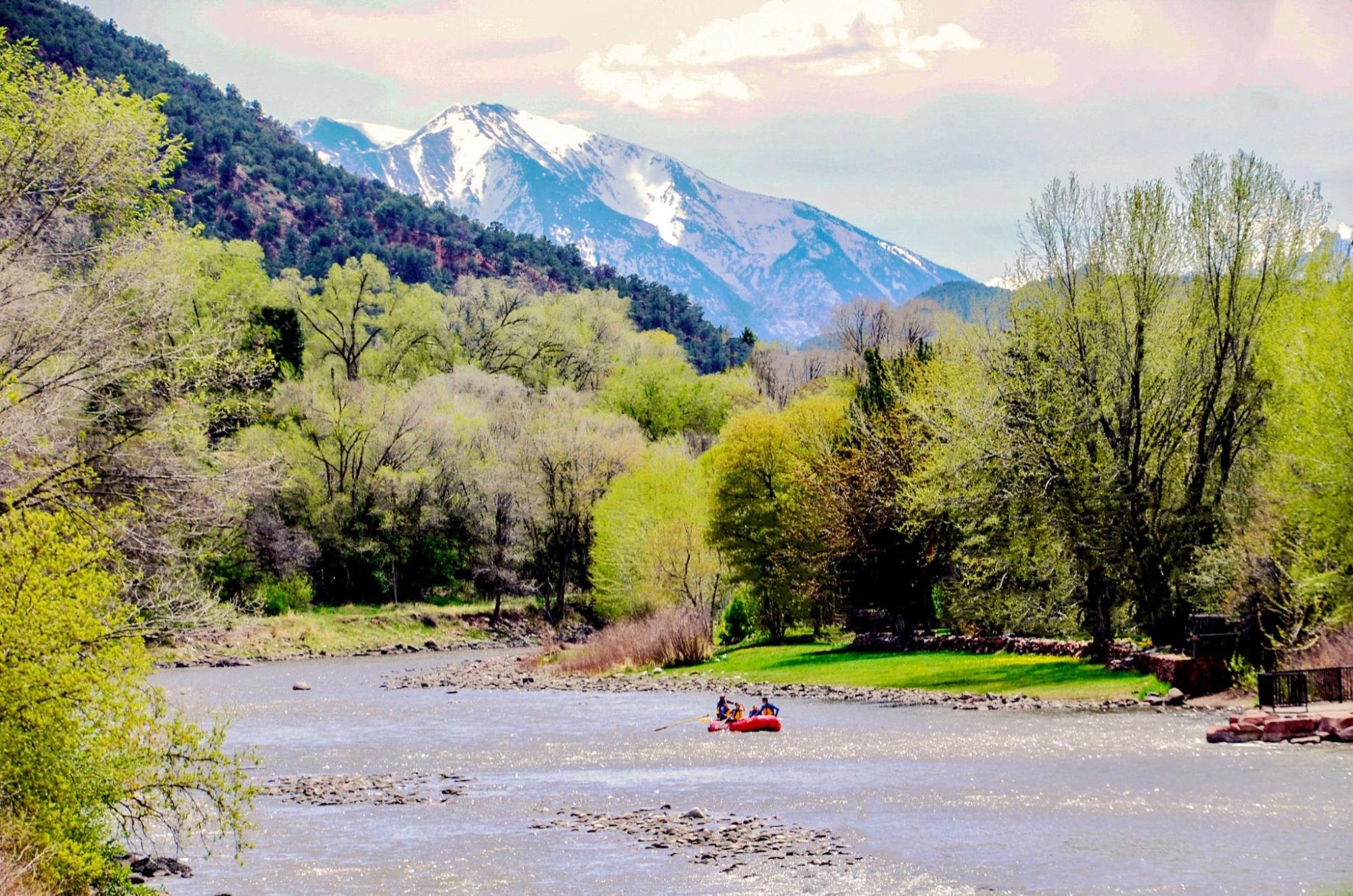
With so many nearby whitewater experiences to choose from, the Roaring Fork River often gets overlooked as a boating destination by many outside of the local population. However, the Roaring Fork River is a hidden gem for all levels and abilities for those looking for a fun, and/or more adventurous float.
For the thrill-seeker looking for the juiciest line on the river (and one of the more advanced runs in the state), look no further than a section called Slaughterhouse. This technical 4.5-mile run is packed full of non-stop action-especially in the spring and includes a spine-tingling 6-foot high waterfall called Slaughterhouse Falls. This section is best suited for the advanced boater.
For some Glenwood Springs whitewater rafting action that doesn’t include going over a waterfall, the lower section from Carbondale to the confluence with the Colorado River provides amazing scenery up and down the river. This trip has some smaller whitewater along the way, with one class II-III rapid called Cemetery that provides the perfect splashy interlude to what is considered more of a laid-back scenic float. With some great views along the way of 12,966’ Mt. Sopris – as well as possible guest appearances from local wildlife such as mule deer, elk, great blue herons, bald eagles, osprey, bears, and more – the 2.5hr trip with Defiance Rafting is the ideal way to enjoy this amazing area.
The Roaring Fork River is not just a great place to fish and/or go boating. Along its banks, it also offers some incredible places to hike, camp, cliff jump, and take stunning photos. One easily accessible hike is called the Grottos Trail. This short (~1mi) but the epic hike is a few miles outside of Aspen and starts with a series of grottos – which is a geological term for a cave or cavern. These so-called caves, named the ‘Ice Caves,’ are more slot canyons than caves and were carved by the rushing waters of the Roaring Fork River over thousands of years. The hike follows the path of the river, which leads to a series of cascading waterfalls and sparkling white and emerald pools. Eventually, it flattens out, unfolding its way through a tranquil evergreen forest.
There are some other great features to explore in the area, including a spot called the Devil’s Punch Bowl, which can offer an exhilarating cliff-jumping experience at the right time of the year and in the right conditions. Cliff jumping is inherently dangerous, so please understand and adhere to personal limitations and adverse conditions. The area also has some amazing places to camp with proximity to the Roaring Fork River, as well as to a nearby tributary called Lincoln Creek.
Roaring Fork River Fun Facts

The small but mighty Roaring Fork River has more vertical drop in its 70 miles than the entire 2,300-mile Mississippi river. Beginning as a small rivulet draining from Independence Lake at 12,500’, The Roaring Fork River grows over 1,000 times in size by the time it reaches its confluence with the Colorado River.
The ‘Roaring Fork’ is derivative of the name ‘Thunder River’, which is what the Ute Tribe called it – most likely due to the deafening roar that can be heard during spring runoff.
Along its banks and on its waters, people have enjoyed solitude, recreation, and inspiration -including John Denver, whose album ‘Rocky Mountain High’ was adorned on the front cover with a shot of him standing next to Slaughterhouse Falls. The album and song sparked an environmental movement and a more evolved awareness and appreciation of nature, which continues to inspire and motivate people today.
Even with the Colorado River drawing a majority of people to the area for recreational purposes, the Roaring Fork River still stands its ground, attracting crowds of outdoor enthusiasts from all over the world due to its accessibility to world-class fishing, boating, camping, hiking, and for the beauty and serenity found in and around its clear waters. This versatile river offers the adventure of a lifetime for anyone willing to get out and explore all that it has to offer.
